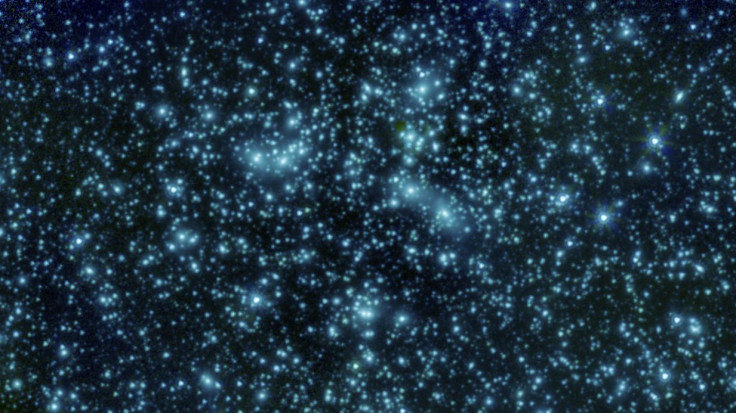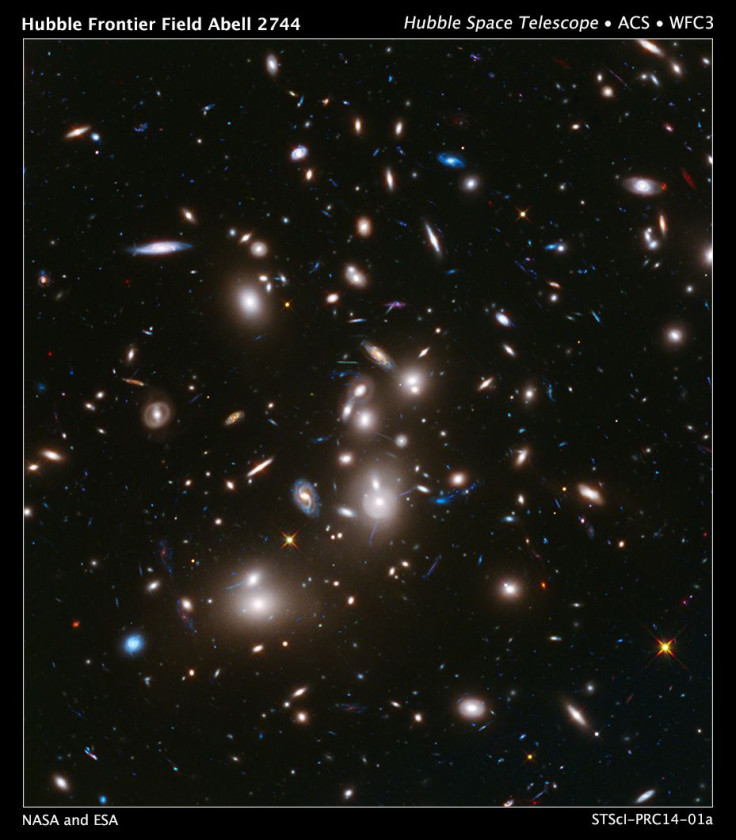Pandora’s Cluster: NASA’s Spitzer Telescope Captures Image Of Distant Galaxy Cluster Abell 2744

NASA’s Spitzer Space Telescope has captured a spectacular image of galaxy cluster Abell 2744, also called Pandora's Cluster. The image of the galactic cluster, located roughly 3.5 billion light-years from the Earth, was released Wednesday.
“The fuzzy blobs in this Spitzer image are the massive galaxies at the core of this cluster, but astronomers will be poring over the images in search of the faint streaks of light created where the cluster magnifies a distant background galaxy,” NASA said in a statement, accompanying the image. “The cluster is also being studied by NASA's Hubble Space Telescope and Chandra X-Ray Observatory in a collaboration called the Frontier Fields project.”
The mass and gravity of the cluster also allows astronomers to witness an intriguing phenomenon called gravitational lensing.
As Einstein explains in his theory of general relativity, gravity warps the fabric of space-time. If an object is sufficiently massive, it can warp space-time to such an extent that the light being emitted by stars, galaxies and other celestial bodies behind it is bent. The more massive an object, the stronger this lensing effect.
In the case of Pandora’s Cluster — so called because it was created by a simultaneous pile-up of at least four separate galaxy clusters — the warping of space-time around it brightens and magnifies images of more distant background galaxies. Warped and stretched images of these galaxies, some of which existed over 12 billion years ago, have previously been captured by Hubble, which made use of gravitational lensing to do so.

© Copyright IBTimes 2024. All rights reserved.












